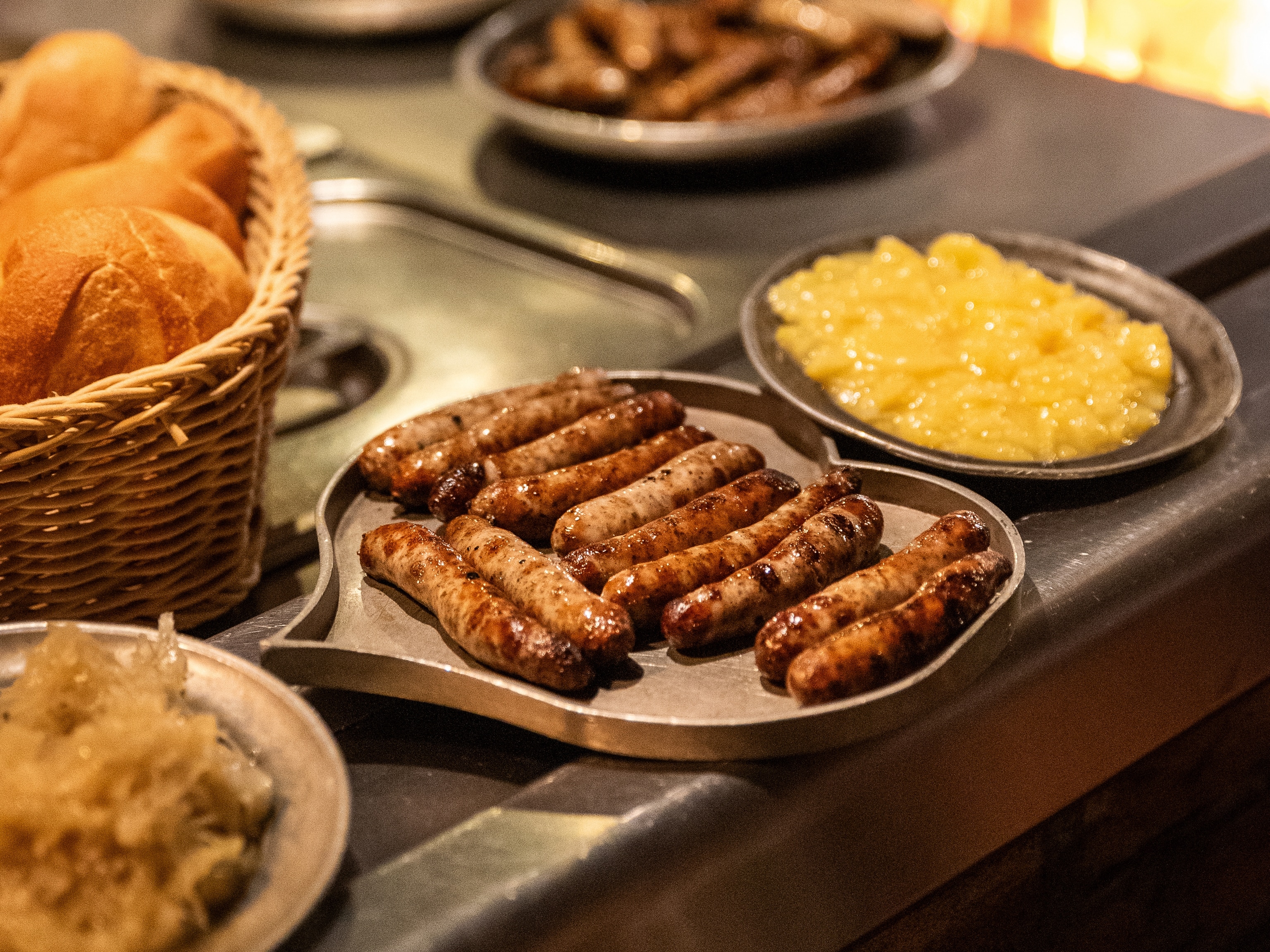
How to make the perfect wiener schnitzel
Fine breadcrumbs and plenty of fat are the keys to cooking this breaded veal cutlet.
The origins of the wiener schnitzel are hazy. It's considered by Austrians to be their national dish, but it’s also a German favourite. And, as it bears some resemblance to veal alla Milanese, it's sometimes suggested to have originated in Italy — but there are also claims it came to Central and Western Europe via the Turks. Whatever its history, this is a dish that's so beloved it's only right that it should be prepared with great care. Here's how to make the perfect version.
1. Meat
A traditional wiener schnitzel is made using a veal cutlet, pounded flat until it’s 4mm thick. Other versions of schnitzel use pork, chicken or even plant-based ingredients such as seitan, but these can’t rightly be described as ‘wiener’ (‘Viennese’). The veal is coated in flour, egg and breadcrumbs before being fried.
2. Breadcrumbs
The right breadcrumbs are crucial to making the perfect schnitzel. White bread without the crust, or the centre of a bread roll, will work well. And, when coating the meat, it’s important not to press the breadcrumbs into it — using a light touch means the breadcrumbs stay drier, allowing them to puff up a little.
3. Frying
A large pan with a generous amount of lard or clarified butter is best. Use a thermometer to check the fat reaches 160–170C: too high and the schnitzel will burn, too low and it won’t crisp up. Continually swirl the pan for the best result, frying for 2-4 mins on each side.
4. Appearance
A good wiener schnitzel must be fluffy, golden and slightly ‘wavy’. The crust may even separate slightly from the meat if it’s been fried perfectly. Denser, flatter versions, with the crumbs pressed into the meat, are common outside of Austria and Germany but aren’t traditional.
5. Accompaniments
The classic garnishes are lingonberries and a slice of lemon and parsley, with a side of potatoes or potato salad. Anchovies may be served on the side (sometimes wrapped around caperberries), too. Accompaniments are specific to the variety of schnitzel.
Recipe: Alexander’s wiener schnitzel
Serves: 4
Takes: 35 mins
Ingredients:
4 veal cutlets, 150-180g each
100g flour
2 eggs, beaten
100g fine white breadcrumbs
lard, clarified butter or plant oil
lingonberries, lemon slices, parsley and potatoes or a potato salad, to serve
anchovies, to serve (optional)
Method:
1. Lay out the veal cutlets on a work surface and pound them until 4mm thin, then season on both sides with salt and pepper.
2. Put the flour, eggs and breadcrumbs on separate plates. Pour a good amount of the lard, clarified butter or plant oil into a pan (enough that the schnitzel will be swimming in it) and heat to 160-170C. Use a thermometer to achieve an accurate temperature — if it’s too high, the schnitzel will burn before it’s cooked through, and if it’s too low, the breadcrumbs will soak up the fat and you won’t get a crispy coating.
3. Coat both sides of a veal cutlet in the flour, then dip it in the beaten eggs (ensuring it’s well covered) and, finally, coat in the breadcrumbs. Place the cutlet in the pan and fry on one side for 2-4 mins until golden-brown, then carefully turn it over and cook until the other side is golden-brown too. Remove the crispy schnitzel from the pan and set on a piece of kitchen paper to drain the excess oil. Repeat with the remaining veal cutlets.
4. Serve the schnitzels with the lingonberries, lemon slices, parsley and potatoes or a potato salad, plus anchovies, if you like.
Alexander Thiel is executive chef at German Gymnasium, London.
To subscribe to National Geographic Traveller (UK) magazine click here. (Available in select countries only).
Related Topics
You May Also Like
Go Further
Animals
- How scientists are piecing together a sperm whale ‘alphabet’How scientists are piecing together a sperm whale ‘alphabet’
- Orangutan seen using plants to heal wound for first timeOrangutan seen using plants to heal wound for first time
- What La Palma's 'lava tubes' tell us about life on other planetsWhat La Palma's 'lava tubes' tell us about life on other planets
- This fungus turns cicadas into zombies who procreate—then dieThis fungus turns cicadas into zombies who procreate—then die
Environment
- The northernmost flower living at the top of the worldThe northernmost flower living at the top of the world
- This floating flower is beautiful—but it's wreaking havoc on NigeriaThis floating flower is beautiful—but it's wreaking havoc on Nigeria
- What the Aral Sea might teach us about life after disasterWhat the Aral Sea might teach us about life after disaster
- What La Palma's 'lava tubes' tell us about life on other planetsWhat La Palma's 'lava tubes' tell us about life on other planets
- How fungi form ‘fairy rings’ and inspire superstitionsHow fungi form ‘fairy rings’ and inspire superstitions
- Your favorite foods may not taste the same in the future. Here's why.Your favorite foods may not taste the same in the future. Here's why.
History & Culture
- These were the real rules of courtship in the ‘Bridgerton’ eraThese were the real rules of courtship in the ‘Bridgerton’ era
- A short history of the Met Gala and its iconic looksA short history of the Met Gala and its iconic looks
Science
- Why trigger points cause so much pain—and how you can relieve itWhy trigger points cause so much pain—and how you can relieve it
- Why ovaries are so crucial to women’s health and longevityWhy ovaries are so crucial to women’s health and longevity
Travel
- What it's like trekking with the Bedouin on Egypt's Sinai TrailWhat it's like trekking with the Bedouin on Egypt's Sinai Trail




